Rarity Found In Texas: 1932 Chevy Panel Delivery
On July 8, 1932, the Dow Jones Industrial Average closed at its lowest point during the Great Depression: 41.22, down from the high just three years earlier of 381.17. The automobile industry, like most other American businesses at the time, stepped back in their production–some 75%. Financing for cars evaporated entirely (GMAC was a lender then for more than ten years already!) This Chevrolet Panel Delivery Truck, found here for sale here on Craigslist and located now near San Antonio, Texas, was built during the peak of the Great Depression when the US was trying to find its way out of the consequences of the stock market crash of 1929. Countless fortunes were wiped out and the national jobless rate was over 20%, climbing to almost 25% in 1933. The price of this truck, brand new, in 1932?–about $595.
Chevrolet offered a number of small 1/2 ton or less “delivery” vehicles in 1932–two models for our discussion were the Sedan Delivery and the Panel Delivery. Sales brochures from 1932 list the Sedan Delivery as part of the passenger car line while the Panel Delivery was part of the light truck line of production vehicles. Chevy’s engine choices for that year were narrow, but both the Sedan Delivery and the Panel Delivery used the cast iron straight-six cylinder 194 cubic inch 60 hp (at 3,000 rpm) engine. The transmission normally installed on both of these cars was a three-speed non-synchromesh, and a four-speed was also available on 3/4 and one-ton models. The chassis were almost identical between the two models, and for 1932 the wheel choice for both was wire wheels fitted with 5.25 x 18 4-ply tires with tubes. Chevrolet used 20 gauge steel for its bodies, and most of the delivery cars were wood frame cabins and freight compartments clad with sheet metal. The roof was hardwood struts and slats with padding and an imitation leather membrane. In this photo, you can see the roof’s hardwood stretchers. One difference between the Sedan Delivery and the Panel Delivery models was that the Sedan had less cargo space and was slightly less rated (800- vs 1,000-pound payload capacity). An optional feature on the Sedan Delivery was a small light that illuminated the business owner’s lettering and artwork usually painted on the upper metal panels where the windows of a passenger car normally are found.
Here is where research on this truck became a little frustrating. Our subject delivery truck has a hood with four hood ventilator doors on each side. This was standard equipment on the Sedan Delivery, but not the Panel Delivery. Below are two different pages from the 1932 Chevrolet sales brochures showing Sedan Delivery and Panel Delivery models:
These three models differ slightly in size and Body Numbers. Yes, the writing is barely legible, our apologies, but the pictures help a little. Notice that these three trucks have louvers for the hood ventilation rather than the ventilator doors. Note as well that the windshield is square at the bottom edge. The Special Half-Ton Panel in the top left drawing has no spare tire in its fender–this may be significant. For reference, here is the 1932 Chevy Sedan Delivery Brochure page:
Here, the windshield bottom is curved, the hood cowl has four doors or hood ports on each side and the headlamp connecting bar is double bars rather than the single bar on the Panel Delivery drawing above. In the upper left drawing on this page, you can see the small side lamps meant to illuminate the vendor’s signage. This drawing shows a single rear door and the cargo compartment is raised with the chrome bumper across the rear. The raised platform is where the rear seats are normally installed in the passenger car version of the Sedan Delivery. Can you now see that the configuration of the front end of the truck looks like it’s a Sedan Delivery model (of which there were about 3,628 made in 1932), but the lack of spare tire wells and the extended rear compartment with two cargo doors and no raised platform or rear bumper make it more like a Special Half-Ton Panel Delivery of which there were only 382 made? We certainly like the thought of the enhanced rarity of the 1932 Special Panel Delivery.
But the answer to that question hardly–yet it is confounding. Truth is, this is a rare truck from eighty-nine years ago that has most (or all) of its steel components intact. That’s plenty to start with if you’re a fan of restoring a well-deserving antique, especially if you’re a skilled carpenter with lots of tools and a good hardwood source nearby. This shows the interior of the rear compartment with its wood walls and floor. The roof trusses have been removed over the entire length of the truck but the seller has some of the main pieces for new patterns.
Wish we could see the engine (no photos). Wish we had access to more definitive identification tags. Positive identification of the truck notwithstanding, the interior is rough. The dash, pedals, steering wheel, and original shift handle and knob are intact. You can see a glimpse of the wood floor and see that the steel driver’s door frame is solid.
The rear door is mostly wood clad with metal, fitted with steel hinges, and with a steel locking mechanism. The carpentry portion of the restoration is a good-sized challenge, but documents written for the repair of Fisher bodies from the early 30s, found here, are particularly helpful (with photos) in understanding the sizes, spacing, and the precise wood joints required to remake the damaged and missing wood cab and roof supports. Seller’s posting is scant on any details about the drive train so the asking price of $7,500 may be reasonable for the condition given the small number of Special Half-Ton Panel Delivery Trucks made in 1932. For all the things this truck has carried over the 88 years of its life–spanning the worst parts of the Depression, the Second World War, and everything else between then and now–can we deny this truck its deserving and complete restoration in light of a somewhat soft market?
Auctions Ending Soon
 2002 Subaru Impreza WRXBid Now2 days$333
2002 Subaru Impreza WRXBid Now2 days$333
 1975 Chevrolet Corvette ConvertibleBid Now2 days$4,000
1975 Chevrolet Corvette ConvertibleBid Now2 days$4,000
 1964 Ford F-100 Camper CustomBid Now2 days$2,000
1964 Ford F-100 Camper CustomBid Now2 days$2,000
 2006 Jeep Wrangler SportBid Now4 days$10,500
2006 Jeep Wrangler SportBid Now4 days$10,500
 1974 Datsun 260ZBid Now6 days$750
1974 Datsun 260ZBid Now6 days$750


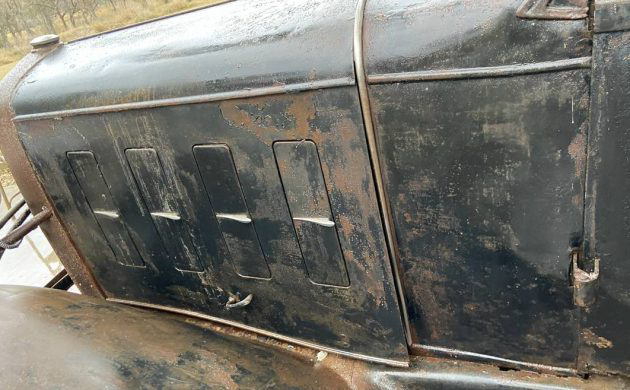
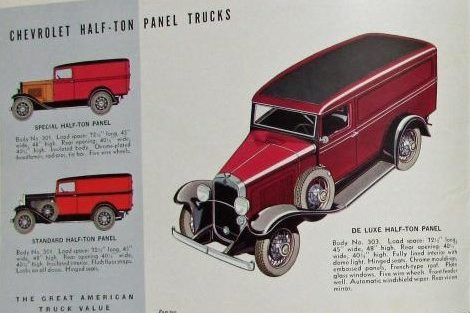
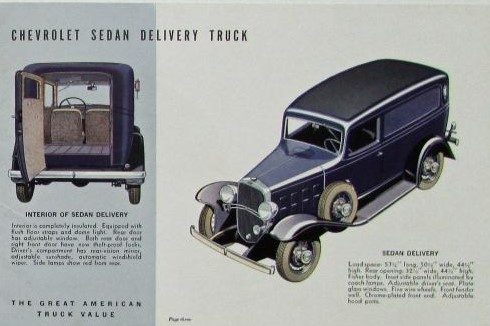
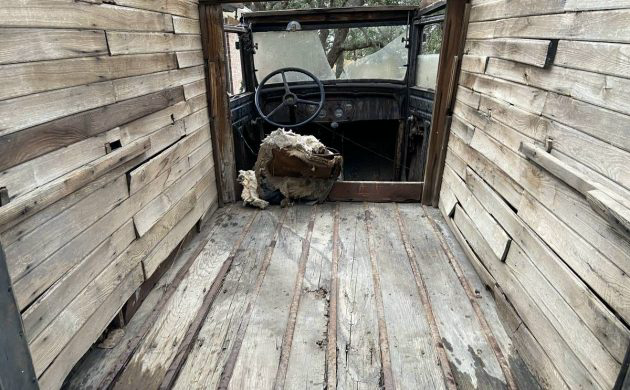
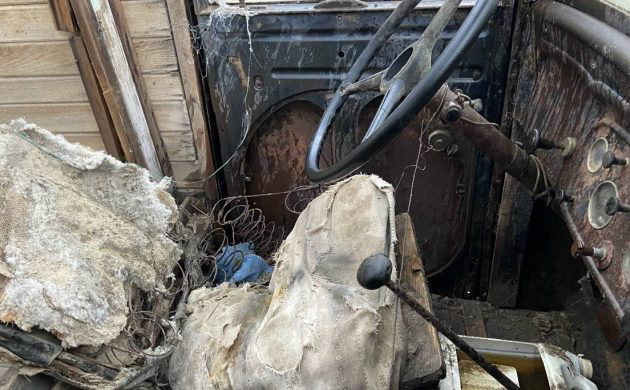


Comments
Still trying to sign up for your e-mails. After three weeks— still nothing. What’s going on?
Totally meant for hauling gin,
Only thing I can see promise in would be a great tax write off to fix uo and restore for a business that wants advertising. Parked in front of a business with DRIVE THRU OPEN would be just the thing today. Sadly those that are still in business. Think the seller waited too long to pull this out of his barn.
Great write up Mike. That’s the kind of detailed information that most of us would not get if we didn’t hound this site. Personally, I’ve never seen one of these rigs on paper or in person. Love it!
Thanks for the kind words, Bob. It was a challenge finding definitive information that still eludes me–but that is the kind of assignment that is the most fun. My insatiable curiosity, hopefully, will keep readers a tad bit more informed if I stumble upon the right questions and answers.
I was truly hoping a reader would have access to that one book or set of documents that would help answer some of the questions I have about this great old truck.
It could be as simple as parts were scavenged in 1932 at the factory to build this truck on spec. Or it could be that the original truck parts were replaced due to a crash, or rot. Or infinity other possible scenarios.
I will keep trying to work for BarnFinds on the most challenging assignments that come up because of the love for incredible machines and the entrepreneurs that made them.
Let’s face it, though: in the end, I have an incredibly long way to go until Steve Magnante retires and I apply for his job.
I just don’t see the value of these old cars today the younger generation doesn’t wants them if you were going to restore it would cost way more then the car is worth. yard art
Dogwater, I hope you’re wrong in that I know some young people who are very interested in these old time capsules. Yet, do to uncertain times (hope for the best; expect the worst) even those persons who have the resources to take on a project and the love for them have become very conservative with their finances, not willing to take the risks involved until the world becomes a more staid environment both physically and financially.
God bless America
My first car was a 1932 Chevrolet 5-window Coupe, one of the first things I discovered ,was how much wood was in the inter structure, but this was 1958 and I was 14 years old and it was repairable. This delivery gives new definition to a wood sub structure, this restoration is for a carpenter and if he does a good job ,it would be great advertisement for his business.
I had a 1932 Chev Confederate Phaeton, RHD, back in the Nineties, one of only 419 made I believe due to the recession and the fact that Henry brought out the first of the V8’s. One of the reasons for me selling it was that it had been in a moderate “T” bone argument on the RH side and the timber frame holding the hinges for the rear door had obviously taken some damage at the bottom so whereas the LH side had a curve front to rear, the RH side was nearly straight. This bugged me to distraction but I couldn’t find anybody qualified to fix it so away it went. Great car though, plenty of power and resonably economical for an old car.
Look at those chrome-plated hood ports!
Nice color choice, solosolo. I can imagine the tweaking to the joinery in any kind of “tap” the wood cabin would encounter.
Reading the Fisher body Repair manual was interesting for their use of fish glue and friction tape. They use friction tape on those places where squeeking would occur between wood and steel. . .numerous places, obviously on cars like the ’32s.
The way the interior of the box is lined with lumber it looks like it could have used to haul ice. The framework wood would be pieces around the inside of the outer skin.
yeah, it may B some confusion btw the ‘wood’ in the actual frame & the wood we see exposed all around the interior pic of the ‘4Sale” vehicle.
I am not an ex – spirt (an ex is a ‘has been’ and a spirt is ‘water under pressure’) esp abt a ’32 chevy.
Is there “more after the rear axel” than in the sedan & panel? May B just the rear door is open & I see that instead of longer vehicle?
My thought is: forget that wood paneling and get the metal ‘back’, complete the cloth/wood roof, meanwhile research/diagnose the drive train~
Those hood sides seem to be used on all passenger cars, but the only panel/sedan deliveries I can find are on the MPC plastic model kits, or some mild custom/ street rod style builds. Just about every photo I could find of stock/restored builds has the louvered hood sides.
Perhaps the reason this truck has a 3-door hood instead of louvers, is because it started out life as a 2-door sedan or coupe. From the door shut post rearward, nothing in the way of sheet metal matches the belt lines on the doors. Look at the brochure and you can easily see the belt line detail continues all the way back.
Plus, I’m sure the 2 front doors are NOT original to the car, as the belt line on the doors are different when compared to the cowl lines. Look at the close-up photo of the hood side, cowl, and the cowl line vs door line — Not even close. I suspect the cowl forward was original to an enclosed car, and they cut away the body from the cowl & windshield post back, then they added sedan front doors [the 2-door examples were too long], then the panel body. It was in the mid 1930s, and people made due with whatever they had. You made it work.
Someone who needed a small truck, and owned a 32 Chevy 2-door closed car, and had a couple of sedan front doors, probably paid a small local shop to do the conversion. Or perhaps the back truck area came from a completely different vehicle. Either way, this is a “marriage of convenience” [convenient parts!]
Best to make the body water-tight, and create a nifty rat rod. Not a candidate for restoring or resto-rod.
Funny – we have a 32 Chevy panel and a 32 Ford panel on our local Dallas area Craigslist.
In the early ’30s, Chevrolet (along with several other makers) offered commercial chassis upon which you could have a body of your specs installed. Chevrolet had a few recommended body makers. The commercial chassis could be bought with either a chassis cowl or a chassis with cowl windshield. Most of the early panel deliveries had side style lines that did not match the hood/cowl. The original commercial chassis usually were delivered with a louvered good and painted radiator shell, but these parts were easily switched when new or in the 85+ years since.
I have the remains of a ’30 Chevy panel delivery with a Martin-Parry built body.
If you can find a copy of “75 Years of Chevrolet” by George H Dammann has the best information I’ve found and Vintage Trucks magazine has an article on delivery trucks each issue.
Thanks 427–will try and find a copy of that book.
You know, when I drive by a giant dealership you can still see that the major manufacturers sell chassis/engine/cab/no body cars to this day.
Did get me to thinking about the book “Grapes of Wrath,” the Depression, and how people routinely re-fashioned their automobile to whatever the pressing need of the day happened to be. It is possible this was a Dust Bowl reconfiguration?
Mike, if you’re looking for detailed info on American vehicles, definitely seek the Crestline publishing company. The publisher was George Dammann, he published a series of 36 volumes ( plus several paperback books on specific types of vehicles) that are overwhelming in their scope of information and pictures, covering almost all US automakers plus a lot of agricultural makers. It’s taken me 45+ years to find copies of all volumes, but most show up on eBay regularly. Definitely seek “Ford Trucks Since 1905”, my favorite of the whole bunch.
Above is a picture of my ’30 panel truck chassis. It was converted to a truck generations ago, but I have the doors which a cabinetmaker nephew rebuilt and the lower rear sides which are really in good shape. Plans are for a ’67 250 six with an S/10 5 speed and an Izuzu Trooper rear axle. If only there were 36 hours in a day!
Its definitely built on the ’32 passenger car chassis and not the truck chassis. The ’32 pickup still used the ’31 frame which precluded using the wider radiator and double bar headlamp. The ’31 frame wasn’t wide enough to accommodate it. And the doors are positively incorrect – look more like ’28 truck doors. A real wood workers delight if anyone is going to restore it.
Yep, this is definitely a Frankenstein car. Sort of like The Grapes Of Wrath truck, that started life as a car. Nothing matches, and unless you find a similar truck, nothing will. But if you do, whats the point? I’d run in the other direction. The wood work is a snap though, a competent cabinet maker can do that in their sleep.